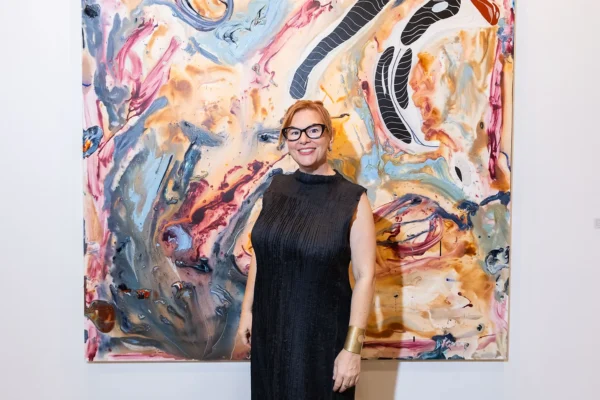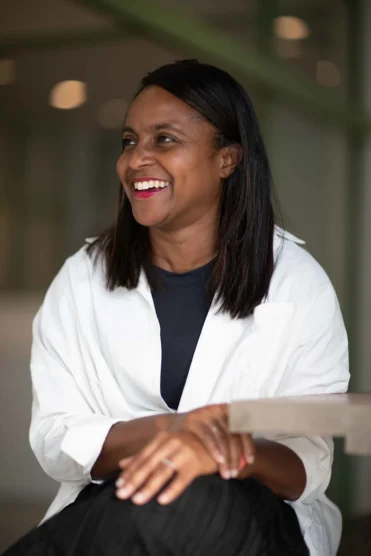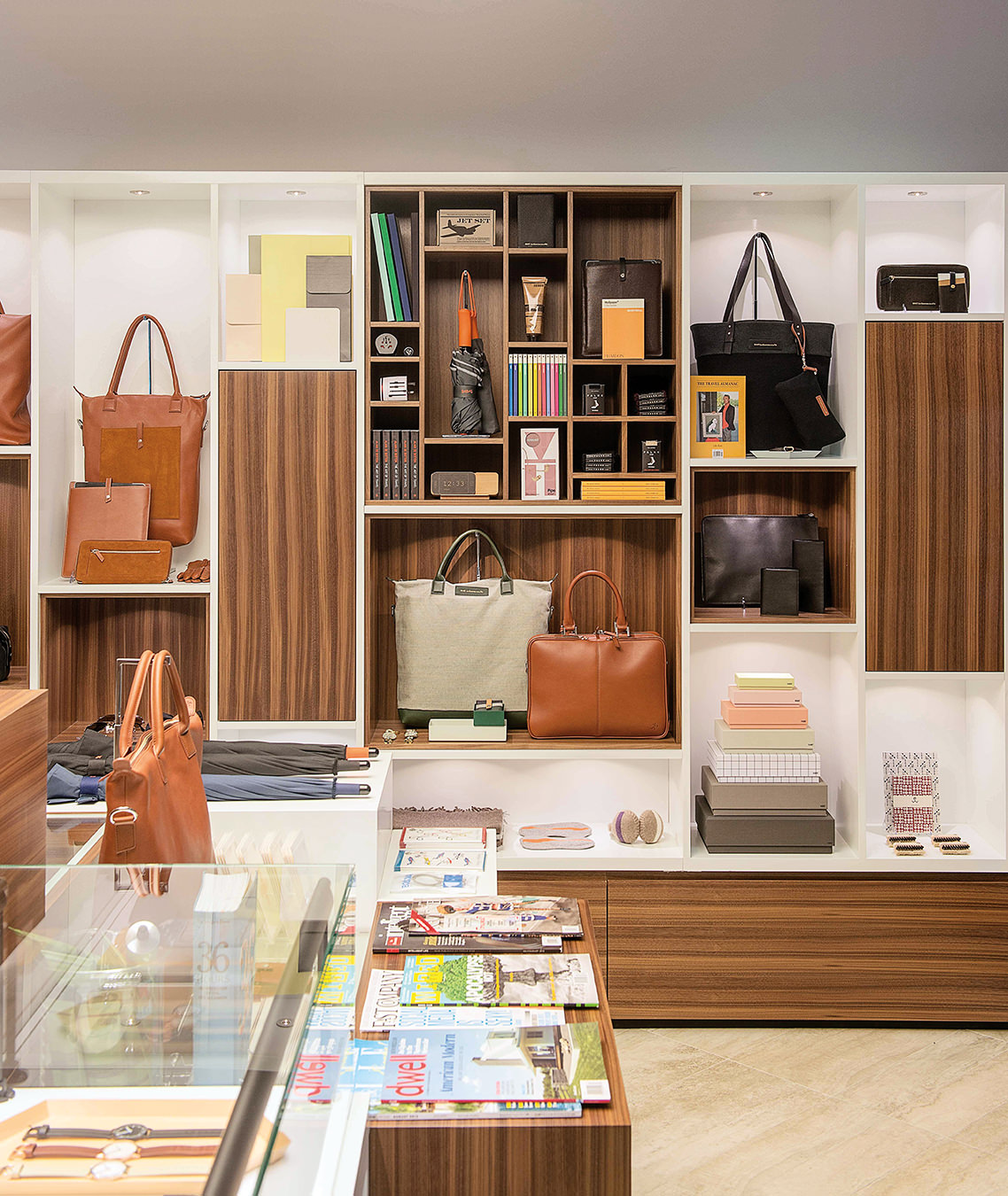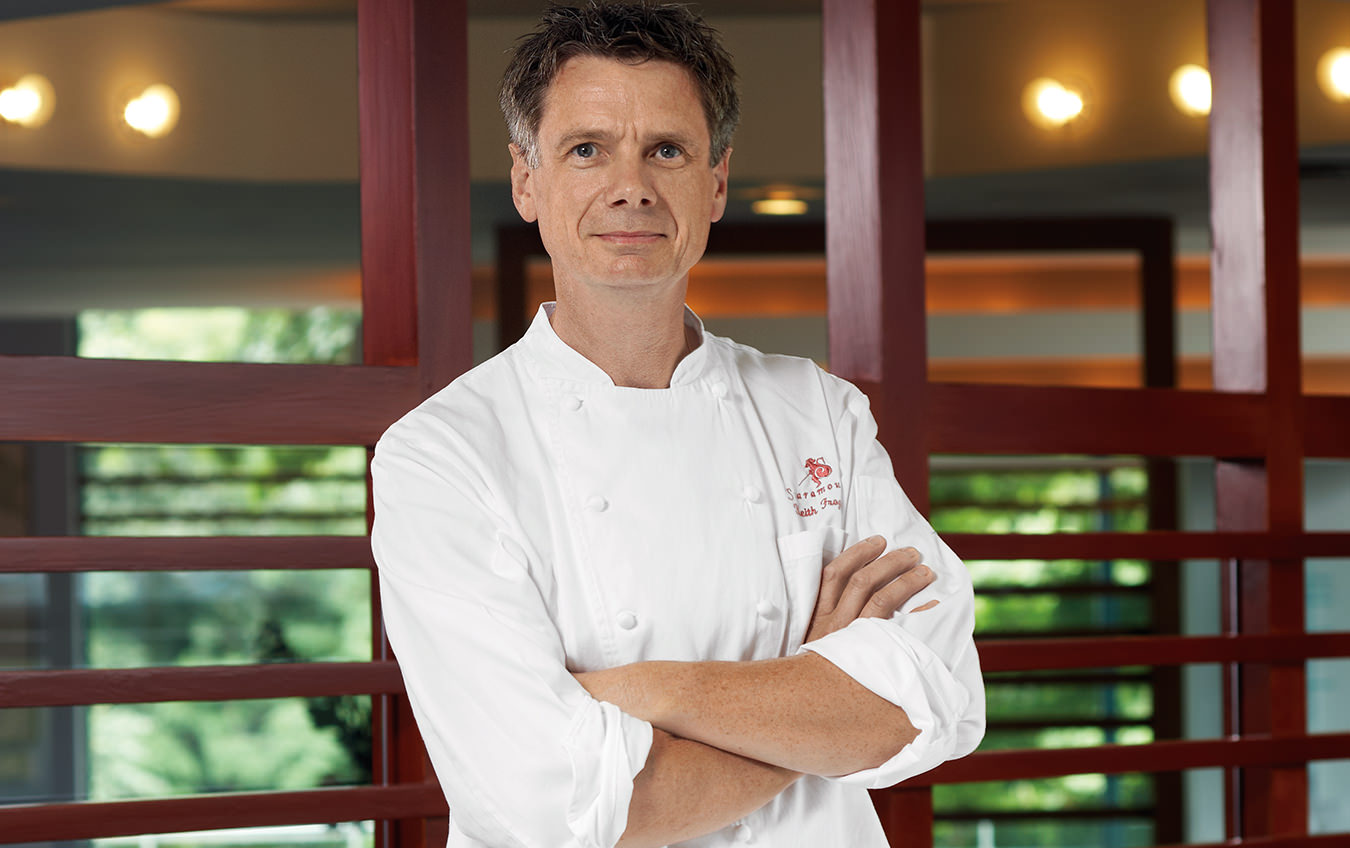More Than Collecting at Art Toronto
How the fair offers so much more than commercial opportunities.

An art fair is an intrinsically commercial endeavour. In a fancy version of a work conference, galleries from around the world come together in one place to connect with collectors and, most importantly, buy art.
That’s why it was a nice surprise to encounter so many noncommercial art interventions at Art Toronto, which took place last month at the Metro Toronto Convention Centre. Two distinct groups of people filled the lobby: people in smart business casual on their way downstairs to the Small Business Summit, and those in avant-garde and designer-wear heading upstairs to the art fair.
The lobby was also a harbinger of what was to come—and not just great outfits. Greeting visitors was a large-scale series of photographs by Sandra Brewster, which was commissioned and exhibited by the Toronto Biennial of Art in 2024. As you journeyed up the escalator, a site-specific artwork by Russna Kaur brought a pop of colour through abstraction, drawing inspiration from her Punjabi heritage and the colourful visuals of weddings and festivals. Kaur seems to be asking: Can an art fair be a place of celebration?

Director of Art Toronto, Mia Nielsen.
From Kaur’s abstractions, the fair spanned out in a choose-your-own-adventure layout.
To the west were museum booths—the National Gallery of Canada, the McMichael, and Power Plant—showing a mix of acquisitions from the fair and archival content. Farther inside were artist-run centres, publications, and the Joseph Plaskett Award, along with ArteSur, a section showcasing Latin American galleries curated by Mexico City gallerist Karen Huber.
To the east was a “speakeasy” curated by RBC (Art Toronto’s principal sponsor) from work in its collection, with a musical theme. A record was playing, and if you asked nicely, an attendant pulled a Preston Pavlis painting by its hinges to display the back of the work—an intricate textile.
Down the middle of the fair was where commercial galleries from across Canada and around the world exhibited works by their artists. Interspersed were large-scale and immersive installations by artists such as Karen Tam, Judy Nakagawa, and the artist duo Michael Dumontier and Neil Farber. If you got tired, the ultrachic designer furniture retailer Bonne Choice provided seating and wares for those who wanted to splurge on a sofa or dining room table to complement a new art purchase.
This smattering of art offerings was deliberate, according to the director of Art Toronto, Mia Nielsen.
“At Art Toronto, we’re very intentional about the mix of booths and presentations, balancing the commercial with the conceptual, and established galleries with emerging voices,” Nielsen said. “The goal is to create a dynamic experience that feels layered and engaging, where audiences can acquire new works, learn, and be inspired all at once.”
The strongest section of the fair was tucked away in the northwest corner: the Focus Exhibition curated by Dr. Zoé Whitley, which brought together artists including Lotus L. Kang, Judy Chartrand, June Clark, and Damien Ajavon. The only downside was how out of the way it was—people might have missed it if they didn’t know to seek it out.

Dr. Zoé Whitley.
The exhibition’s title, Fly Birds Fly, is a line from the Toronto-based poet Olive Senior, whose unconventional prose emotes a hopeful energy that extends to the work. “From there, joy, resilience, and a spirit of hopeful nonconformity gathered together the other seven artists whose nine visions cohered into Focus 2025,” Whitley said.
“I always approach exhibitions artist-first rather than theme first. Knowing that the invitation presented an opportunity to think specifically about the artistic contributions worldwide of Toronto-based artists, I immediately wanted to engage Vera Frenkel and Lotus L. Kang, both of whom I’ve had the privilege of working with previously,” she said. “Naturally, this led to me thinking about how their works might speak to one another intergenerationally.”
When asked if the commercial nature of curating within an art fair influenced her curation, Whitley was firm: “No, not at all.”
For that, the fair was better off. The moments of curation and installation created surprise and delight in a context that can otherwise tire you out. The fair seemed to say: It doesn’t matter how you do it, simply come and engage with art.




